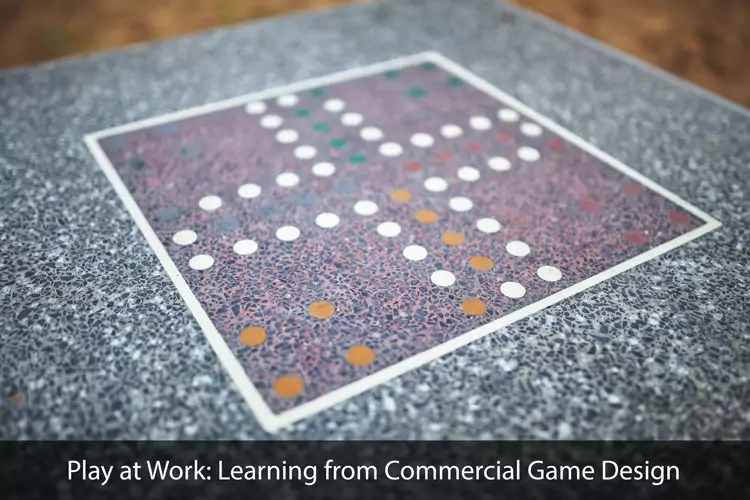Play at Work: Learning from Commercial Game Design

From the training of surgeons to pilots to educators, video games continue to appear in classrooms and often in lieu of classrooms. But are we ready for this serious play? The idea of using video games for education and training remains difficult for many people to accept. After all, when most people think about video games, the first thing they imagine is a teenager addicted to World of Warcraft. Beyond the negative stereotypes, however, some educational theorists insist that games have much to offer children, teens and adults in educational and training contexts alike. More surprising, however, is that increasingly educators are looking to commercial video game producers for design solutions.

Some educational theorists maintain that commercially produced computer games stand as an exemplary model of what educational games might look like—that is, if we can learn to accept them. Games made for education and training purposes all too often replicate the problems associated with traditional approaches to classroom instruction. In other words, they are highly structured, restrict learners from moving at their own pace, and insist that concepts and skills be mastered in a particular order. If educational games often fail, then, they fail for the same reasons that education so often fails. In a nutshell, these games fall short by not placing learners at the center of the learning experience.
By contrast, commercial video games successfully do something that few educational games do. In the world of commercial video game design, even young learners often do not require instructions to play or understand a new game. In this scenario, models, mentors and teachers are no longer a factor. In the best designed games, immediacy and interactivity are effectively harnessed to teach gamers about the game and start them playing. In other words, rather than wait to be told how to proceed, these games offer role playing positions that enable gamers to learn as they go and more importantly, to learn at their own pace. Freed of traditional lessons and teachers and their implied hierarchies, gamers enjoy an unprecedented level of agency and freedom. But how to capture the potential of commercial video games, and what role can or should educators and trainers play in this process?
In reality, educators and trainers do not entirely need to disappear, but they may need to take a backseat when it comes to game design. If we want to put play to work both in educational and training contexts and to do so in an effective manner, after all, it is imperative to begin taking game design and its possibilities more seriously. Here, it is important to bear in mind that this is not necessarily new or unique.
For many years, educators have relied on textbooks, but they have rarely produced textbooks. Instead, they have relied on professional editors, book designers and publishers to produce and circulate educational books. Books designed by educators (e.g., photocopied course kits) may be functional, but they are rarely appealing as book objects. The same holds true for educational games. Games with a pedagogical function will always require the input from educators and trainers but their design is likely best left up to professionals with expertise is in game design not education or training. With few exceptions, after all, educational games tend to be characterized by low-quality graphics and limited player choice. Indeed, many educational games are designed to deliver information or to reinforce skills that are more about memorization than decision making or creativity. In other words, the very things that make video games exciting (high quality graphics, player agency, exploration and surprise) are typically absent from the educational game experience. But working more closely with game designers, these limitations can be overcome.
At the same time, educators and trainers need to recognize that gaming is about more than games—gaming is a culture and a growing one. In 2015, 58% of Americans reported playing video games and 62% of those gamers were adults. In contrast to the past, nearly 45% of gamers were female. What this means is that a growing number of children and adults are already gamers and as a result, they are bound to have specific expectations for what games should look like and do, even when they are being used in an education or training context. The challenge, then, is twofold. First, educators and trainers need to work more closely with commercial video game designers to create more engaging educational games. Second, educators and trainers need to think seriously about the fact that they are no longer delivering curricula to a generation of people addicted to television or books but rather to a generation whose primarily mood of entertainment is one that already takes interactivity for granted.
Don’t Miss These Essential Tools
Download our The Strategic Value of Workplace Training and Development white paper
Discover the Top 10 Ways Learning Management Systems Can Improve the Workplace Environment to enhance productivity
Explore the 10 Ideas To Optimize Online Training And Maximize Impact in your organization
Quickly see How a Learning Culture Can Improve Your Organization